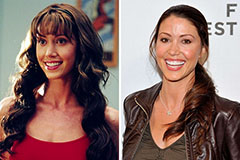The Definitive Guide for Causey Orthodontics
Table of ContentsWhat Does Causey Orthodontics Do?The smart Trick of Causey Orthodontics That Nobody is DiscussingHow Causey Orthodontics can Save You Time, Stress, and Money.The Definitive Guide for Causey OrthodonticsNot known Facts About Causey Orthodontics
Disregarding occlusal relationships, it was typical to eliminate teeth for a range of dental concerns, such as malalignment or congestion. The concept of an undamaged dentition was not extensively appreciated in those days, making bite connections seem unnecessary. In the late 1800s, the idea of occlusion was important for producing reputable prosthetic replacement teeth.As these ideas of prosthetic occlusion progressed, it became a vital device for dental care. It was in 1890 that the job and influence of Dr. Edwards H. Angle began to be felt, with his contribution to contemporary orthodontics particularly notable. Concentrated on prosthodontics, he educated in Pennsylvania and Minnesota before routing his focus towards dental occlusion and the treatments required to keep it as a regular problem, thus becoming understood as the "daddy of contemporary orthodontics".

The principle of suitable occlusion, as postulated by Angle and included into a classification system, made it possible for a shift in the direction of treating malocclusion, which is any kind of deviation from regular occlusion. Having a full collection of teeth on both arches was extremely demanded in orthodontic therapy because of the demand for specific partnerships between them.
A Biased View of Causey Orthodontics
As occlusion ended up being the vital priority, facial proportions and looks were ignored - best orthodontist near me. To attain ideal occlusals without using exterior forces, Angle postulated that having best occlusion was the very best method to gain optimum facial aesthetic appeals. With the passing of time, it ended up being rather obvious that also an extraordinary occlusion was not ideal when taken into consideration from a visual factor of sight
It came to be obvious that orthodontic therapy might readjust mandibular growth, causing the formation of practical jaw orthopedics in Europe and extraoral pressure procedures in the US. Nowadays, both useful appliances and extraoral devices are used around the globe with the objective of modifying development patterns and forms. Subsequently, pursuing true, or at the very least improved, jaw connections had actually become the main purpose of therapy by the mid-20th century.
Rumored Buzz on Causey Orthodontics
 Until the mid-1970s, braces were made by wrapping steel around each tooth. https://reedsy.com/discovery/user/causeyortho7., it came to be possible to instead bond metal brackets to the teeth.
Until the mid-1970s, braces were made by wrapping steel around each tooth. https://reedsy.com/discovery/user/causeyortho7., it came to be possible to instead bond metal brackets to the teeth.This has actually had purposeful impacts on orthodontic therapies that are provided regularly, and these are: 1. Correct interarchal relationships 2. Proper crown angulation (tip) 3.
The benefit of the layout depends on its bracket and archwire combination, which requires only marginal wire flexing from the orthodontist or medical professional (best orthodontist near me). It's aptly called after this function: the angle of the port and thickness of the bracket base inevitably figure out where each tooth is positioned with little requirement for extra adjustment
Everything about Causey Orthodontics
Both of these systems utilized the same brackets for every tooth and necessitated the flexing of an archwire in 3 planes for situating teeth in their preferred placements, with these bends dictating ultimate placements. When it comes to orthodontic devices, they are separated into two kinds: removable and fixed. Removable home appliances can be tackled and off by the person as called for.

Hence, practically all contemporary fixed home appliances can be thought about variations on this edgewise appliance system. Early 20th-century orthodontist Edward Angle made a major payment to the world of dentistry. He created 4 distinctive device systems that have actually been utilized as the basis for many orthodontic therapies today, preventing a couple of exceptions.
Indicators on Causey Orthodontics You Need To Know

The cord ended in a thread, and to relocate forward, a flexible nut was made use of, which enabled a boost in circumference. By ligation, each private tooth was connected to this expansive archwire (orthodontist services). As a result of its restricted variety of activity, Angle was not able to accomplish accurate tooth placing with an E-arch
These tubes held a firm pin, which could be rearranged at each visit in order to move them in place. Referred to as the "bone-growing home appliance", this contraption was supposed to motivate much healthier bone growth due to its possibility for transferring pressure directly to the roots. Nonetheless, implementing it confirmed bothersome in truth.
 Burke Ramsey Then & Now!
Burke Ramsey Then & Now! Shannon Elizabeth Then & Now!
Shannon Elizabeth Then & Now! Jeri Ryan Then & Now!
Jeri Ryan Then & Now! Katey Sagal Then & Now!
Katey Sagal Then & Now! Peter Billingsley Then & Now!
Peter Billingsley Then & Now!